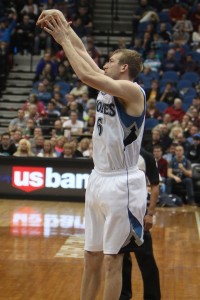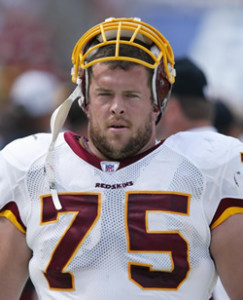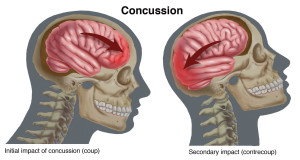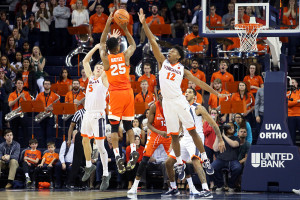Posted on
June 22, 2018 by
Joe Fleming
 Anterior cruciate ligament (ACL) injuries are some of the most common injuries that athletes experience. Even professional athletes like women’s soccer champion Alex Morgan and Broncos cornerback Chris Harris, Jr. have struggled to recover from torn ACLs.
Anterior cruciate ligament (ACL) injuries are some of the most common injuries that athletes experience. Even professional athletes like women’s soccer champion Alex Morgan and Broncos cornerback Chris Harris, Jr. have struggled to recover from torn ACLs.
Whether you’re a recreational athlete or someone whose hoping to go pro, it pays to know how to prevent and treat an ACL injury. Read on to learn more about this injury and what you can do to avoid being sidelined by it.
What is an ACL Injury?
The anterior cruciate ligament is a major stabilizing and supporting ligament in the knee. It’s responsible for connecting the femur (thigh bone) and tibia (shin bone). The ligament is located in the front of the knee, right above the top of the shin bone and behind the patella (kneecap).
An ACL injury is technically a type of sprain. As with other types of sprains, there are grades of a sprained knee that determine how serious the injury is.
ACL injuries can be broken down into three different grades:
-
Grade 1 — 10 percent or less of the ligament fibers are torn
-
Grade 2 — 11-90 percent of the ligament fibers are torn
-
Grade 3 — more than 90 percent of the ligament fibers are torn and the ligament has completely ruptured
Almost any athlete can suffer from an ACL injury, but athletes who do a lot of jumping or have to stop and/or change directions suddenly are more likely to experience damage to their ACL. Basketball players, soccer players, tennis players, downhill skiers, volleyball players, and gymnasts tend to experience the greatest number of ACL injuries.
Symptoms of an ACL Injury
An ACL injury is typically characterized by a loud “popping” sound or sensation in the knee. Many people also experience swelling, instability, loss of range of motion, and pain when trying to bear weight. Read the rest of this entry →
Tags: ACL injuriesSports Medicine
Category
Health & Fitness, Sports Medicine
Posted on
June 14, 2018 by
Joe Fleming

Injuries hampered Robbie Hummel as he played in only 98 games over two NBA seasons.
Approximately 25 percent of all sports injuries involve the hand or wrist, and basketball players are particularly susceptible.
Former Minnesota Timberwolves small forward Robbie Hummel and Cavaliers forward Kevin Love are two of the many professional basketball players who have experienced hand injuries in their careers.
Whether you’re an aspiring professional or strictly a recreational player, it’s important to know how to protect your hands and wrists.
Read on to learn some important tips and tricks that can help players of all ages and skill levels prevent hand and wrist injuries.
Common Hand and Wrist Injuries in Basketball Players
The following are some of the most common hand and wrist injuries that basketball players deal with:
-
Jammed fingers — this is most common hand injury to occur in basketball. The finger gets “jammed” when the ball hits the tip of the finger instead of the palm of the hand. Finger jams can lead to more serious injuries, like sprains of the finger ligaments, dislocations, or fractures.
-
Wrist sprains — these occur when a ligament gets stretched or torn, usually as a result of the wrist being forcefully bent, or if the player falls down onto an outstretched hand. When the ligament is just stretched, it is considered a mild sprain. More severe sprains occur when the ligament is partially or totally torn.
-
Wrist fractures — wrist fractures occur when one or more of the bones in the wrist is broken. Forceful bending can cause fractures, as can falling onto an outstretched hand.
-
Finger/hand fractures — the bones in the fingers and hands are also susceptible to fractures. Even small breaks can totally put the hand out of commission and make simple tasks incredibly painful and difficult. Finger and hand fractures often occur when the ball is caught, when a player runs into another player, or during falls. Read the rest of this entry →
Tags: Basketball injuriesRobbie Hummel
Category
Basketball, Health & Fitness, Sports Medicine
Posted on
May 26, 2018 by
Joe Fleming
 Ankle sprains are the most common injury among soccer players, accounting for 20 percent of all injuries.
Ankle sprains are the most common injury among soccer players, accounting for 20 percent of all injuries.
Ankle sprains affect soccer players of all levels, from beginners to professionals like Cristiano Ronaldo and Lionel Messi.
No matter what your skill level, when it comes to preventing sprains during games, there are lots of things you can do to keep your ankles strong and healthy so that you can spend as much time on the field as possible.
Read on to learn more about how soccer players of all ages and abilities can avoid ankle sprains.
Identify the Common Causes of Ankle Sprains
In order to prevent ankle sprains, it’s important to first know how they most often occur in soccer players.
Listed below are some of the most common reasons that soccer players end up with ankle sprains:
-
Contact injuries — one player slides into another and the impact causes the player’s ankle to roll
-
Tripping over equipment that wasn’t put away properly
-
Stepping into holes or tripping over bumps on uneven, poorly maintained fields
-
Wearing loose-fitting cleats that leave room for the ankle to twist inside
Preventing Ankle Sprains
Some of these causes of ankle sprains are unavoidable. But, soccer players (and coaches of younger players) can still be proactive about strengthening the muscles that surround the ankle joint. By doing this, players will be more resilient to contact injuries, falls, and other common causes of ankle sprains.
Listed below are four different ways that soccer players can strengthen their lower body and reduce their risk of dealing with sprains. Read the rest of this entry →
Tags: Christiano Ronaldosoccer injuries
Category
Health & Fitness, Sports Medicine
Posted on
May 16, 2018 by
Joe Fleming
 When it comes to staying fit and injury-free, many athletes look to preventing common sprains, strains, and ligament tears. What about the dangers of skin infections though? Surprisingly, these seemingly harmless culprits can turn into the most life-threatening of them all. Don’t forget about the former tight end for the New York Giant, Daniel Fells, who almost had his foot amputated due to a skin infection in 2016; or the Washington Redskins and Dallas Cowboys defensive tackle, Brandon Noble, who fought MRSA complications for two whole years.
When it comes to staying fit and injury-free, many athletes look to preventing common sprains, strains, and ligament tears. What about the dangers of skin infections though? Surprisingly, these seemingly harmless culprits can turn into the most life-threatening of them all. Don’t forget about the former tight end for the New York Giant, Daniel Fells, who almost had his foot amputated due to a skin infection in 2016; or the Washington Redskins and Dallas Cowboys defensive tackle, Brandon Noble, who fought MRSA complications for two whole years.
When it comes to recognizing the signs of skin infections and taking quick action, a little knowledge goes a long way. Don’t miss this quick guide:
Common Skin Infections Among Athletes
While various skin ailments can plague athletes, the following are often most widely spread. They include:
MRSA – this antibiotic-resistant strain of staph bacteria, specifically methicillin-resistant Staphylococcus aureus (MRSA) is fatal when left untreated and continues to affect not just professional athletes on a yearly basis, but college and even high school-age players too.
Staph bacteria naturally resides on people’s bodies; in fact, an estimated 1 in 3 people carry around staph bacteria in their nose (and between 5 and 10% actually carry around MRSA). Though typically harmless, sometimes when staph bacteria makes its way into open skin (which is common for athletes, especially in contact sports, to have) it can infect tissue, blood, the respiratory system, and more. Read the rest of this entry →
Category
Health & Fitness, Sports Medicine
Posted on
March 10, 2018 by
Martin William
 A concussion is a term that you have probably heard in the past. At first it does not seem like something too serious, but a concussion is still a type of brain injury. However, if the damage is not too big, the brain is able to recover itself.
A concussion is a term that you have probably heard in the past. At first it does not seem like something too serious, but a concussion is still a type of brain injury. However, if the damage is not too big, the brain is able to recover itself.
Since many people are not properly informed about concussions, this article will try to provide the basic information about them. After all, concussions are not something that should be ignored, and we should know how to deal with them.
What should you know about concussions?
A concussion is a TBI (traumatic brain injury), which is an injury that happens when an external force harms the brain. However, concussions are not that severe, the brain is usually able to repair itself. Usually concussions happen after a hit to the head, but a sudden movement that makes the brain hit the skull can also cause a concussion.
That is the reasons why concussions happen more often in sports. There is a bigger risk factor there, and not even helmets can protect you from concussions. In fact, helmets are there to make sure that you don’t crack your head.
It is important to be informed about concussions so you will know what to do if you have to handle one. However, the Internet has plenty of information about concussions and traumatic brain injuries, so that should not represent a problem. Read the rest of this entry →
Tags: concussions
Category
Sports Medicine
Posted on
March 07, 2018 by
Joe Fleming
 For the most part, college athletes bounce back from physical adversity very well. Muscle pulls and other injuries that might sideline professional players for two or three weeks might keep collegians off the court for a day or two. That’s especially true late in the year when so much is at stake.
For the most part, college athletes bounce back from physical adversity very well. Muscle pulls and other injuries that might sideline professional players for two or three weeks might keep collegians off the court for a day or two. That’s especially true late in the year when so much is at stake.
But there’s only so much the body can take. Further complicating matters, some teams must fight hard through their entire conference tournament. Then, they have short turnarounds before their first NCAA tournament games.
Wrist Injuries and Basketball
These injuries are serious problems in competitive basketball. Even a lightweight brace often affects a shot. Furthermore, on their drives to the hoop, players want to think about their next move instead of their throbbing wrists.
These players must recover from these injuries just like the rest of us get better. But unlike athletes, office workers and stay-at-home moms alike can usually wear braces that give reliable support for injured wrists. Such support both eases discomfort and helps the injured muscles heal themselves faster.
Rest is often a very good treatment as well. However, for athletes, “rest” is usually a four-letter word. Athletes are notorious for wanting to get back in the game, and win-at-all-costs coaches and trainers sometimes enable that attitude. Read the rest of this entry →
Tags: March MadnessNCAA Basketball Tournament
Category
Basketball, NCAA Basketball Tourney, Sports Medicine
 Anterior cruciate ligament (ACL) injuries are some of the most common injuries that athletes experience. Even professional athletes like women’s soccer champion Alex Morgan and Broncos cornerback Chris Harris, Jr. have struggled to recover from torn ACLs.
Anterior cruciate ligament (ACL) injuries are some of the most common injuries that athletes experience. Even professional athletes like women’s soccer champion Alex Morgan and Broncos cornerback Chris Harris, Jr. have struggled to recover from torn ACLs.







